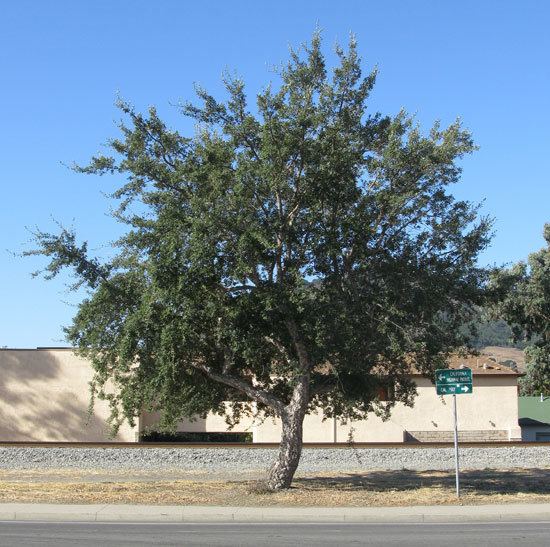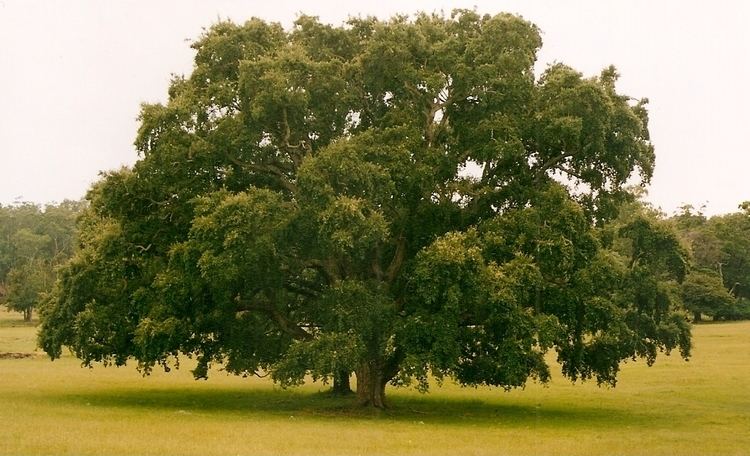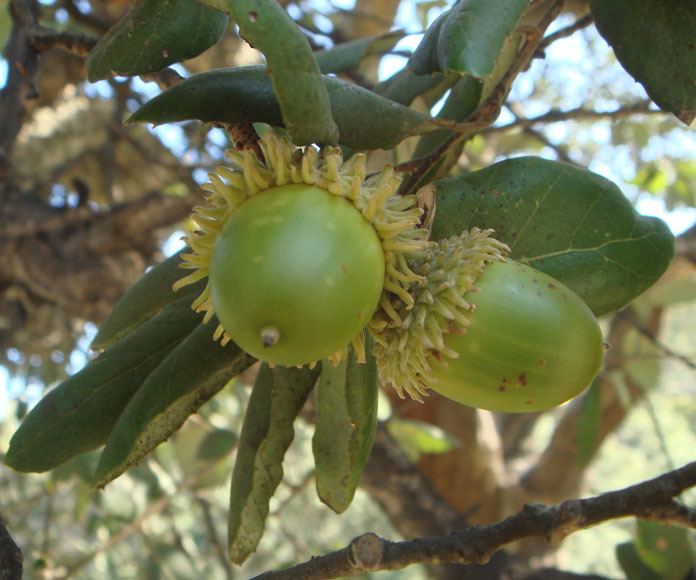Kingdom Plantae Family Fagaceae Section Cerris Higher classification Oak | Order Fagales Genus Quercus Scientific name Quercus suber Rank Species | |
 | ||
Similar Quercus ilex, Oak, Quercus faginea, Strawberry tree, Stone pine | ||
129 cork bark oak quercus suber easy bonsai trees for beginners
Quercus suber, commonly called the cork oak, is a medium-sized, evergreen oak tree in the section Quercus sect. Cerris. It is the primary source of cork for wine bottle stoppers and other uses, such as cork flooring. It is native to southwest Europe and northwest Africa.
Contents
- 129 cork bark oak quercus suber easy bonsai trees for beginners
- Trees cork oak quercus suber non native tree species uk eden project cornwall jan 2017
- Ecology
- Cultivation and use
- Pathogens
- References

It grows to up to 20 m (66 ft), although it is typically more stunted in its native environment. The leaves are 4 to 7 cm (1.6 to 2.8 in) long, weakly lobed or coarsely toothed, dark green above, paler beneath, with the leaf margins often downcurved. The acorns are 2 to 3 cm (0.79 to 1.18 in) long, in a deep cup fringed with elongated scales.

Trees cork oak quercus suber non native tree species uk eden project cornwall jan 2017
Ecology

Natural stands of cork oak can support diverse ecosystems. For example, in parts of northwestern North Africa, some cork oak forests are habitat to the endangered Barbary macaque, Macaca sylvanus, a species whose habitat is fragmented and whose range was prehistorically much wider. In Western Europe, namely in Portugal and Spain, the cork oak forests are home to endangered species such as the Iberian lynx, the most critically threatened feline in the world. The tree has a thick, insulating bark that may have been the cork oak's evolutionary answer to forest fires. After a fire, while many of the other tree species merely regenerate from seeds (as, for example, the maritime pine) or resprout from the base of the tree (as, for example, the holm oak) the cork oak branches, protected by cork, quickly resprout and recompose the tree canopy. The quick regeneration of the pyrophyte tree seems to be an advantage compared to other species that, after a fire, return to an initial stage of development.
Cultivation and use

The tree forms a thick, rugged bark containing high levels of suberin. Over time the cork cambium layer of bark can develop considerable thickness and can be harvested every 7 to ten years to produce cork. The harvesting of cork does not harm the tree, in fact, no trees are cut down during the harvesting process. Only the bark is extracted, and a new layer of cork regrows, making it a renewable resource. The tree is cultivated in Spain, Portugal, Algeria, Morocco, France, Italy and Tunisia. Cork oaks are considered to be soil builders and their fruits have been shown to have useful insecticidal properties. Cork oak forests cover approximately 25,000 square kilometres in those countries (equivalent to 2,500,000 hectares (6,200,000 acres)). Portugal accounts for around 50% of the world cork harvest. Cork oaks cannot legally be cut down in Portugal, except for forest management felling of old, unproductive trees, and, even in those cases, farmers need special permission from the Ministry of Agriculture.
Q. suber is commonly grown in agroforestry systems, known as montado in Portugal and dehesa in Spain. These are open woods with low tree density (50–300 trees/ha). In these systems, forage species are commonly grown under the trees and grazed by cattle during the summer.
Cork oaks live about 150 to 250 years. Virgin cork (or 'male' cork) is the first cork cut from generally 25-year-old trees. Another 9 to 12 years is required for the second harvest, and a tree can be harvested about twelve times in its lifetime. Cork harvesting is done entirely without machinery, being dependent solely on human labor. Usually five people are required to harvest the tree's bark, using a small axe. The process requires training due to the skill required to harvest bark without harming the tree. The European cork industry produces 300,000 tonnes of cork a year, with a value of €1.5 billion and employing 30,000 people. Wine corks represent 15% of cork usage by weight but 66% of revenues.
The cork left after stoppers have been made is used to make a wide range of products, including insulation panels, floor and wall tiles and sound-proofing in the car industry, as well as for handicrafts and artistic uses. This include cork paper, used in printing, book covering, clothing manufacture, cork maroquinerie and other products. Cork is also used in making badminton shuttlecocks, handles of fishing rods and special devices for the space industry.
Cork oaks are sometimes planted as individual trees, providing a minor income to their owners. The tree is also sometimes cultivated for ornament. Hybrids with turkey oak (Quercus cerris) are regular, both in the wild in southwest Europe and in cultivation; the hybrid is known as Lucombe oak Quercus × hispanica. Some cork is also produced in eastern Asia from the related Chinese cork oak (Quercus variabilis)
